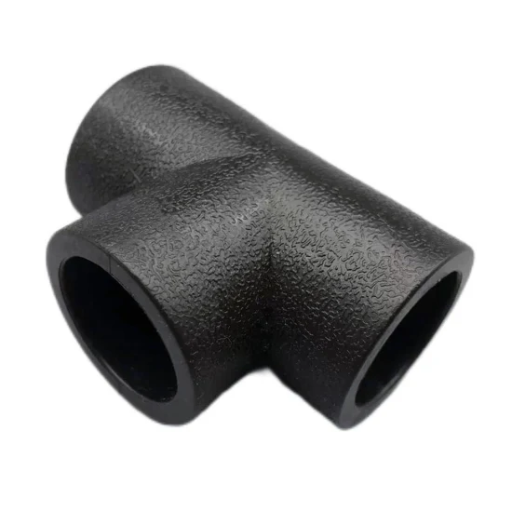The materials and fittings a person chooses for plumbing and piping systems can significantly affect efficiency and longevity. High-density polyethylene (HDPE) has become popular because it is strongly resistant to corrosion, chemicals, and environmental stress. In HDPE networks, socket fusion equal tee fittings are essential for easing connections between different pipe parts or sections of the same line. This is an article about HDPE socket fusion equal tee pipe fittings that give their characteristics, advantages, installation procedure, and what should be considered when using them. Professionals or people who engage in do-it-yourself activities will find knowledge about these components functional.
What is a Socket Fusion Equal Tee Pipe Fitting?
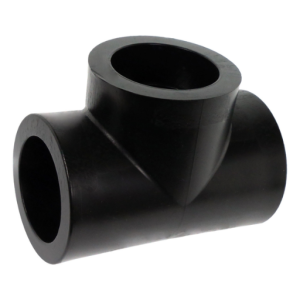
Image source: https://hdpesupply.com/
Socket fusion equal tee pipe fitting is a kind of plumbing equipment capable of linking three similar angles of a High-Density Polyethylene (HDPE) pipe, often 90 degrees. It allows seamless transposition from one tube to another, facilitating the creation of trunk lines and minimizing disturbance in fluid flow within the system. The socket Fusion technique involves heating both ends of pipes and the fitting so that they slightly melt before joining them together to form a strong connection free from leaks. This technique is ideal for HDPE materials, which makes them highly durable and long-lasting under various applications ranging from home water supply lines to industrial pipelines.
Understanding Socket Fusion Welding
Socket fusion welding is a widely used technique for joining High-Density Polyethylene (HDPE) pipes and fittings through the application of heat to create a strong bond. It begins with heating the pipe ends and the fitting sockets to a certain degree, as indicated by a specific temperature, approximately 500°F (260°C). When their surfaces attain the desired melt point, they are squeezed together, which forms fusion joints, and the molten material cools and solidifies. Socket fusion welding has many advantages over other methods in terms of its permanent solid joints that do not necessitate adhesives or solvents, making it ideal for new installations and repairs in various applications. Proper technique is essential to ensure a successful fusion; this includes using the correct temperature and maintaining optimal join time to avoid underheating or overheating, which could compromise the integrity of the connection.
Characteristics of HDPE Equal Tee
An HDPE equal tee is also called a three-way fitting, made from high-density polyethylene meant for connecting three pipe sections at equal angles. It has several beneficial qualities:
- Durability: HDPE equal tees are highly resistant to impact, chemicals, and environmental stressors; thus, they can be employed indoors and outdoors.
- Flexibility: The material’s natural flexibility allows it to be easily installed everywhere without affecting the piping system’s performance.
- Corrosion Resistance: With this kind of resistance against corrosion found in metal fittings, these pipes last longer in all environments.
- Lightweight: They are easy to carry because they are light, making it possible for anyone with less strength, hence low labor costs incurred during installation without heavy machinery.
- Leak-Proof Connections: Together with socket fusion or butt fusion welding techniques, HDPE equal tees provide perfect seals that prevent leakages hence enhancing system reliability.
These features make these parts suitable for use in wastewater management, irrigation systems, and industrial processes.
Applications in Water and Gas Supply
HDPE equal tees are widely used in water and gas supply systems because of their robustness and performance qualities. In water supply applications, these fittings ensure effective water distribution by joining multiple pipes together without any leaks, thus promoting smooth fluid flow. The use of these devices is significant in municipal water infrastructure, irrigation systems, and residential plumbing, where they need to be dependable and long-lasting.
For gas supply applications, HDPE equal tees are made of materials that can withstand chemicals and natural gas, among other gases. These connections that do not leak are safe according to the strictest regulations, done through the most advanced fusion welding technology. Additionally, the lightweight nature of HDPE fittings reduces transportation and installation costs, making them preferred by contractors as well as utility companies.
What are the Product Descriptions and Specifications?
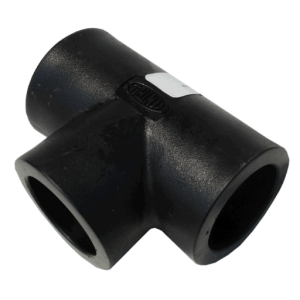
HDPE equal tees are durable fittings manufactured from high-density polyethylene, which possess good performance properties for various piping system settings. Specifically, they have:
- Material: High-density polyethylene (HDPE) is known for its resistance to corrosion, chemicals, and UV exposure.
- Sizes: They come in different sizes, usually from one inch to 12 inches or beyond, depending on various pipeline demands.
- Pressure Rating: This is typically rated for high-pressure applications up to SDR 11 or more, depending on size and mode of fixing it into position.
- Connection Types: They can be joined securely using different joins, such as socket fusion or butt fusion so that there are no leaks at all.
- Temperature Range: They can withstand temperatures up to 140°F (60°C), making them versatile enough for cold or hot water uses.
These product specifications indicate how HDPE equal tees can be used in various ways within water and gas supplies, assuring reliability and effectiveness.
Material Specifications: HDPE, PE, and More
High-density polyethylene (HDPE) is praised for its many uses and strengths in different situations. It is a thermoplastic created from petroleum that balances strength and lightweight. HDPE has impressive resistance to various chemicals, which allows it to be used in environments where there may be exposure to harsh substances.
Polyethylene (PE) is an umbrella term for different types of polyethylene, including low-density polyethylene (LDPE) and linear low-density polyethylene (LLDPE). Like high-density polyethylene, PE is resistant to chemicals and moisture but differs in terms of density and flexibility. For these reasons, PE can be used for packaging, bottles, and containers, among other things.
In summary, HDPE, along with other varieties of polyethylene, is an essential material for industries seeking a balance between performance and cost-effectiveness. This, in turn, promotes recycling programs and prolongs product life spans.
Understanding SDR Ratings: SDR11 and SDR17
Another critical parameter in pipe specification is the SDR or Standard Dimension Ratio, which indicates the relationship between a pipe’s diameter and wall thickness. The SDR rating is calculated by dividing the outside diameter of a pipe by its wall thickness. For example, SDR11 means that the outer diameter is 11 times larger than the wall thickness, having a thicker, more muscular wall than SDR17, where its wall thickness is less than that of SDR11. Lower values of SDR indicate thicker walls, changing the pressure rating on pipes and their suitability for various applications. In practice, pipes with an SDR11 are commonly used for high-pressure operations, while systems with an SDR17 tend to be suitable for lower pressures. Hence, it is essential to understand these ratings when selecting pipes for plumbing and industrial applications.
Dimensions and Size Variations
While discussing dimensions and size variations in pipes, we cannot ignore that different pipe sizes suit various applications and installation needs. Common examples include nominal (NPS), simply as numbers usually denote approximate inside diameters of pipes, and actual outer diameters (OD), presented in inches. For instance, 4-inch NPS tubing typically has an OD measurement of around 4.5 inches at most. Additionally, lengths can differ significantly, ranging from ten feet to twenty or even forty, depending on project specificities. Knowledge about these dimensions is crucial for ensuring proper fitment and performance while selecting tubes in various systems, including plumbing and industrial applications. Besides, observing applicable size standards and specifications maintains conformity across diverse parts, thus allowing proper compatibility among them so that their performance remains consistent according to what is expected from related components available in the market.
How do you install an HDPE socket Fusion equal tee?
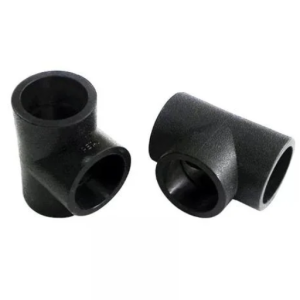
One must install an HDPE socket fusion equal tee to have a secure and unyielding connection. First, the pipe and fitting surfaces must be prepared by cleaning off all the dirt and other contaminants. Then, measure and mark insertion depth on both pipe and fitting for proper alignment. Then, using the socket fusion machine set at the right temperature for HDPE, heat the pipe ends and equal tee until a molten bead forms. Remove from the heating element rapidly, then put the pipe in the tee with a firm, even pressure to ensure it is well-bonded. Hold joint static for at least 30 seconds to cool appropriately for an excellent bond.
Step-by-Step Installation Guide
- Preparation: Start by thoroughly cleaning both HDPE pipes and fittings to remove soil, oil, or debris that may hamper perfect fusion.
- Measure and Mark: Measure how far into the fitting your pipe is going in terms of its insertion depth, then mark clearly. This step is essential to make sure they fit perfectly.
- Heating: Use a socket fusion machine adjusted for HDPE (usually around 400 degrees Fahrenheit). Hold the ends of both pipes together with an equal tee until some melted material is seen at their edges.
- Joining: Extract both items from the heat source before sliding quickly but steadily apart within a marked distance until the end of the tube sinks into the couplings, i.e., the tubes should merge securely under pressure.
- Cooling: Hold the joint steady for at least half a minute, thus making certain it will cool down, resulting in the solidification process.
- Inspection: Check there are no gaps or irregularities between them when this has cooled down completely after fusing. Look out for any residual materials or incomplete melds on positioning plates.
These steps will guide you through an installation process that guarantees reliability alongside seamless connectivity of your HDPE Socket Fusion Equal Tee.
Required Machines and Tools
The following machines and tools are crucial for successfully installing an equal tee HDPE socket fusion:
- Socket Fusion Machine: This machine is specifically designed to heat the HDPE pipe, and the fitting is heated to a set temperature before joining. It has adjustable temperatures for different sizes of fittings.
- Pipe Cutter: A sharp cutting machine should be used to make clean, straight cuts on the HDPE pipe. Clean cuts enhance proper alignment and bonding during fusion.
- Cleaning Tools: Cleaning solutions such as rags or wipes must clear contaminants from inside the pipe and fitting that will interfere with the fusion process before installation.
- Measuring Tools: Measure tapes and rulers help determine the pipe’s insertion depth into the fitting, thereby ensuring proper fitment.
- Safety Gear: To protect oneself from hot materials and tools during installation, appropriate safety gear, such as gloves and goggles, is advisable.
These will enable you to install your HDPE socket fusion equal tee seamlessly.
Common Installation Mistakes to Avoid
The article lists three mistakes that can damage a joint’s strength while installing an HPDE socket fused equal tee. The pitfalls listed below represent some of those mistakes:
- Inadequate Heating Time: One of the most common errors is failing to allow adequate heating time for both pipe and fitting before they reach the correct welding temperature. An example is when this step is done hurriedly, resulting in weak joints liable to failure.
- Improper Alignment: Neglecting this aspect leads to stress points where leakage will occur after fusion. Before proceeding, always check whether or not they are aligned well as expected and ensure their proper insertion depths.
- Ignoring Joint Cleaning: Failure to properly clean these surfaces may introduce contaminants that inhibit fusing. Joining surfaces should never have any forms of debris or grease. After being put through correct cleaning procedures, nothing like debris or grease remains on them at all times before undergoing further steps.
By avoiding these common mistakes, you can significantly increase the success and life of your HDPE installations.
Comparing Socket Fusion Fittings with Butt Fusion and Electrofusion Methods
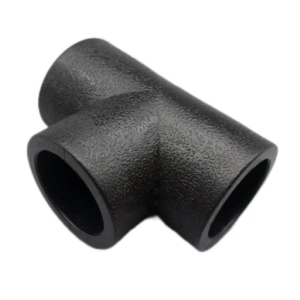
In the matter of joining HDPE pipes, there are three ways usually used such as socket fusion, butt fusion, and electrofusion.
- Socket Fusion: This involves heating the ends of the pipe and fitting them with a heated tool before pressing them together. It is suited to small pipes and allows for a fast process with minimal equipment requirements. However, joint strength is dependent on accurate alignment and sufficient heating time.
- Butt Fusion: When using the butt fusion method, heat the ends of the pipes, then press them together. It is suitable for large-diameter pipes and results in a continuous solid joint. Avoiding weak joints may require more specialized equipment, and adequate heating time and pressure control must be achieved.
- Electrofusion: For electrofusion, one uses a fitting with integrated heating elements that melt both the pipe and fitting when electric current flows through them. This technique can be adapted for different pipe sizes, creating a secure connection that does not depend much on workers’ errors during installation or use, although it has higher costs due to the fittings needed.
Each has advantages and disadvantages, making it applicable in different contexts based on pipeline size, environmental factors, and project specifications. By understanding these variations, you can choose which form suits your specific HDPE installation needs.
Advantages of Socket Fusion Over Butt Fusion
Comparatively, socket fusion offers several gains as compared to butt fusion and thus is the preferable technique in some instances; it is also swift. Socket fusion usually takes a very short time to complete, unlike other methods such as butt welding, which are time-consuming, and thus can save on the construction period. Besides, there is less need for specialized equipment in this method than in many others, making it useful for smaller projects or small operations. The fitting design in socket fusion allows accommodation of slight misalignments, while butt fusion requires accurate alignment for strong bond creation; hence, there is a reduced need for precise alignment during the process because of the flexible design of the fitting used. The joint can be adjusted slightly due to pressure without breaking because it has an allowance that enables it to take a few degrees off; this makes sure that no stress concentration occurs within the joints; however, when using butt welding, you have to follow all the requirements since there is no margin for error here. Corrections such as these require a retaking of measurements and realignment before taking up the heat guns again and reheating all those pipes until perfection.
When to Use Electrofusion Instead?
Electrofusion usually comes in handy in cases where strict regulation over fusing must be observed, especially under challenging surroundings or with pipes featuring differing diameters. When space at a site is limited during installation, or it is necessary to join tubes within confined areas, electrofusion becomes an ideal method for joining HDPE pipes since little manual effort is involved. Electrofusion also proves advantageous when applied on large diameter pipes because its heating capability covers even across weld areas, providing a well-bonded mass between two elements that are being merged. It can also be employed when existing pipeline systems need repairs or modifications without additional components by smoothly connecting new pipe sections to old lines. Also important are overall cost considerations that may result from the vandalism of pipelines or their multiple breakages into various parts, along with necessary payments for replacing damaged piping parts, which might always necessitate a complete overhaul.
Durability and Reliability: A Critical Comparison
Common factors of durability and dependability among various methods used to join pipes at the moment. Socket fusion and electrofusion are highly durable due to their robust joining techniques, producing solid joints. Socket fusion is lauded for its simplicity and efficiency in maintaining uniformity in joint quality when conditions are appropriate. Conversely, electrofusion is noted for its versatility under challenging circumstances, such as varying pipe diameters and pre-existing installations. Moreover, electrofusion joints have less likelihood of leakages or getting affected by environmental stresses. Still, they have also been known for a long time, making them reliable for applications that will continue over many years. The ultimate decision on either option should be based on project specifics such as environmental aspects, pipe size, and accessibility limitations, marking the result of construction with improved service life.
What are Some Related Products?
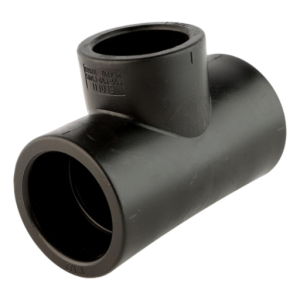
There are several products related to joining methods that improve efficiency and effectiveness in diverse applications like the following:
- Socket Fusion Equipment: These typically consist of fusing tools and heating elements designed explicitly for socket fusion, guaranteeing accurate and uniform joints.
- Electrofusion Fittings: They incorporate heating elements, making integrating them into existing pipeline systems easier, especially during repairs or alterations.
- Pipeline Inspection Robots: Such robots can assess pipeline integrity without excavation work, helping identify potential problems before major repairs are necessary.
- Pipe Handling Equipment: Pipe rollers, cradles, lifts, etc., help secure handling during the installation process, thus ensuring workers’ safety while minimizing the possibility of damaging pipes.
- Joint Testing Equipment: This equipment tests the pipe joints’ post-installation integrity to meet industry standards regarding their life span.
These products are vital in supporting efficient installation maintenance practices within pipelines.
Similar HDPE Pipe Fittings
- Butt Fusion Fittings: Often featured for their sturdy process of joining, butt fusion fittings ensure strong connections without any crevices by heating and fusing the ends of pipes, making them ideal for high-pressure applications.
- Compression Fittings: Compression fittings are known for being versatile, as they can be easily installed or dismantled. They are handy when joining HDPE pipes with different diameters and are commonly found in irrigation systems.
- Reducer Fittings: These fittings help connect pipes of varying sizes, ensuring a smooth transition between different pipe diameters. They are crucial in managing flow rates and are necessary components in complex piping systems.
Looking into these choices will help guarantee appropriate performance and fitness-for-purpose concerning your piping projects.
Other Types of Tees: Reducing and Equal
There are two key types of tees used in piping systems: reducing tees and equal tees.
- Reducing Tees: These are used to join pipes of unequal diameters. Built specifically to allow for a smaller pipe branching off from a larger one, these tees regulate flow and pressure, mainly when such a need arises due to space constraints. They often find use where limited space does not permit large-sized structures.
- Equal Tees: On the contrary, equal tees are most suitable when three pipes with similar diameters have to be joined. They assist flow in changing direction without causing any disruptions. In diverse systems, equal tees maintain a constant pressure level across them, enabling an easy distribution of fluids, which makes them applicable both at home and commercially.
Knowing the difference between reducing and equal tees is instrumental in selecting the correct fitting for specific requirements in any particular pipeline hence contributing towards enhanced efficiency and reliability within such a system.
Pipe Accessories: Elbows, Caps, and More
Pipe fittings are essential for maintaining the efficiency and integrity of pipe systems.
- Elbows: These fittings allow variations in the direction of flow within a piping system, such as 90° and 45°. Elbows help navigate around objects and change flow paths, thus reducing potential pressure drops.
- Caps: They are utilized to close the open ends of pipes to ensure that the fluid is confined within the system. They also prevent foreign bodies from contacting it; this maintains its quality and consistency.
- Tees and Crosses: In addition to reducing and equal tees, crosses can connect four pipes simultaneously, facilitating multiple flow paths. Therefore, this allows intricate routing of fluids on larger scales.
The right choice of pipe accessories is essential for the system’s overall performance because customization may be achieved by varying requirements in different projects.
Reference sources
-
HDPE Socket Fusion Equal Tee Fittings – HDPE Supply
This source offers a comprehensive overview of HDPE socket fusion equal tee fittings, detailing their specifications, applications, and the fusion process. It provides technical explanations and practical advice for using these fittings in various piping systems.
Read more -
HDPE Socket Fusion Equal Tee Fittings – ISCO Industries
ISCO Industries’ page includes information on the production standards, testing procedures, and quality assurance for HDPE socket fusion equal tee fittings. The content also explores the benefits and applications of these fittings in different industries, making it a valuable resource.
Read more -
HDPE Socket Fusion Equal Tee Fittings – SUNPLAST
SUNPLAST provides in-depth details on HDPE socket fusion equal tee fittings, highlighting their features, benefits, and uses. The site also covers the manufacturing process and the quality standards adhered to during production.
Read more
Related Articles: Specifications for Socket Fusion Equal Tee



